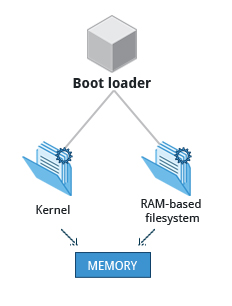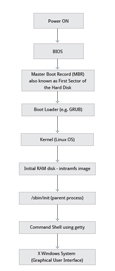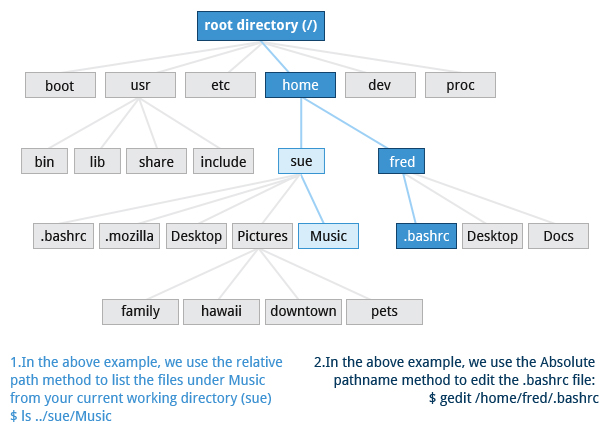The Boot Process
Have you ever wondered what happens in the background from the time you press the Powerbutton until the Linux login prompt appears?
The Linux boot process is the procedure for initializing the system. It consists of everything that happens from when the computer power is first switched on until the user interface is fully operational.
Once you start using Linux, you will find that having a good understanding of the steps in the boot process will help you with troubleshooting problems as well as with tailoring the computer's performance to your needs.
The Linux Kernel
initramfs) into memory so it can be used directly by the kernel.
When the kernel is loaded in RAM, it immediately initializes and configures the computer’s memory and also configures all the hardware attached to the system. This includes all processors, I/O subsystems, storage devices, etc. The kernel also loads some necessary user space applications.




